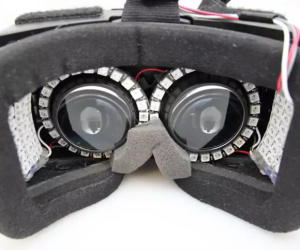Howdy, Stranger!
It looks like you're new here. If you want to get involved, click one of these buttons!
Quick Links
Microsoft demos SparseLightVR tech
 ceratop001
Member RarePosts: 1,594
ceratop001
Member RarePosts: 1,594
in Hardware

Microsoft Research has unveiled a hack which could help to solve some of the issues relating to nausea in virtual reality: SparseLightVR.
Anyone who has experienced Philips Ambilight technology or its multitudinous homebrew knock-offs will be familiar with the concept of extending a display beyond its official boundaries. In Ambilight systems, a series of RGB LEDs mounted to the rear of the display's edges provide reactive ambient lighting which adjusts its brightness and hue depending on what's happening on-screen - giving the impression that the action extends beyond the confines of the panel itself. SparseLightVR is the self-same concept extended to virtual reality.
Current-generation virtual reality headsets suffer from a relatively narrow field of vision compared to the human eye. When you're concentrating on objects right in front of you, that's not too much of a problem; try to track objects in your periphery, however, and you can struggle. Worse, the narrow FoV can lead to nausea - but Microsoft claims SparseLightVR helps with both issues.
Full Story: http://www.bit-tech.net/news/hardware/2016/05/05/microsoft-sparselightvr/1
